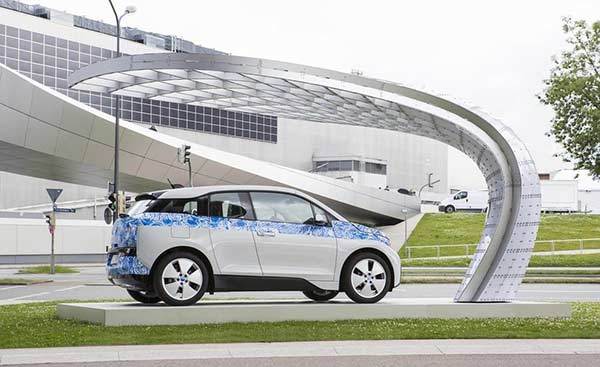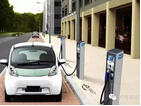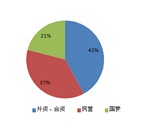Last year, China’s sales of new energy vehicles reached 700,000 vehicles. Although this is only a small part of the total, with the country's strong support for new energy vehicles, this market is only a matter of time.

Last year, the sales of new energy vehicles in China reached 700,000 vehicles. Although this is only a small part of the total, with the country's strong support for new energy vehicles, this market is only a matter of time.
At the 1st session of the 13th National People's Congress this year, Premier Li Keqiang’s government work report made a comprehensive review of government work in the past five years and conducted overall deployment of government work in 2018.
Among them, in response to the development of new energy vehicles, the meeting pointed out that it is necessary to further promote supply-side structural reforms and accelerate the building of manufacturing powers, “promoting the development of integrated circuits, fifth-generation mobile communications, aircraft engines, new energy vehicles, and new materials industries”. .
This work report placed the new energy automotive industry in a prominent position, indicating that the development of new energy vehicles is not only an important part of advancing structural reforms on the supply side, but also a powerful driving force for China to become a powerful manufacturing nation.
According to statistics from the CSR trade association, sales of new energy passenger vehicles in 2018 reached 29,000 in February, which was a 7% decline from the previous month and a year-on-year growth rate of 76%.
The new energy automotive industry is flourishing and urgently needed to explode, and various policy incentives have also led to various problems in the development of the new energy vehicle market. For example, the level of product quality is uneven, and after-sales service problems are frequently reported by the media.
Insiders pointed out that the new energy auto industry is still in an emerging stage. Consumers will encounter more new problems in the actual consumption and experience of new energy automotive products. Related laws and regulations need to be further refined to guide and regulate the actual situation. Only by ensuring the consumer's user experience and rights, will new energy vehicles have a better future.
Year of transition
This year's government work report put forward suggestions for promoting the development of the new energy auto industry. Premier Li Keqiang’s government work report mentioned that the preferential policies for the purchase of new energy vehicles will be extended for another three years.
Since the time entered 2018, the new energy automotive industry has continued to strengthen. On the whole, there are still many factors that have benefited from policies.
Cui Dongshu, secretary-general of the National Passenger Vehicle Market Information Association, said that this year is a year of transition from the purchase of new energy vehicles to the promotion of the subsidy policy to the market.This year's new energy passenger vehicles showed a tenacious month-on-month upward trend. In January, sales of new energy passenger vehicles reached 31,638 units, a year-on-year increase of 483%. Since the Chinese New Year of the Lunar New Year is generally in February, February is the period of sales downturn. However, in February of this year, it also reached the scale of 29,150 vehicles, an increase of 76% over the same period last year.
Overall, sales of pure electric products accounted for 65%, and mixed plug-in accounted for 35%, of which pure electric cars increased by 15% from the same period last year to 14,546 units, while pure electric SUVs surged 551% year-on-year due to lower base. 4265 vehicles.
From the sales structure in February, it can be seen that the sales of pure electric passenger cars accounted for 77% of the sales volume of A00, which was 14,500 units, and increased by 31% compared to the same period of last year, becoming the main position for the growth of new energy products.
From the point of view of major sales locations and product mix, new energy products are still concentrated in major urban areas where license plates and subsidies are associated, as well as daily travel-based products. In spite of the increase in new brands of new energy vehicles since last year, large sales are still under the banner of traditional auto companies.
Therefore, relatively speaking, the difficulties that consumers face in confronting new energy products are generally still similar to those of traditional fuel vehicles. Such as the emergence of product quality, 4S shop after-sales service can not be resolved, the company has ignored, the two sides kick the ball situation.The quality problems or complaints in the field of new energy vehicles have been affected by the fact that the overall sales volume has not been high and the use environment is not too bad. With 2018 being the first year when the battery of new energy automotive products formally entered the phase of recession elimination, there is reason to believe that this year is not only a new peak in the development of the new energy automotive industry, but also a growth in the maintenance of rights for new energy vehicles. year.
Aftermarket area to be explored

As early as in 2013, China's new energy automotive industry was mainly concentrated in the field of public relations services. Since the consumer is not an individual, after the occurrence of after-sales problems or disputes, it rarely involves personal rights protection.
With the introduction of new energy vehicles into the personal consumption market in 2013, complaints about new energy vehicles have started to increase year by year, and are mainly concentrated on the two aspects of power battery and after-sales service.On the one hand, the performance of the power battery is often not as effective and continuous as in corporate publicity. On the other hand, after-sales of various new energy brands are also gradually established and explored, and there is no comprehensive and effective management system and method. Copy, so the effect in the field of after-sales service remains to be verified.
In addition, consumers pay relatively high price for the purchase of new energy vehicle products. They hope that they can save costs through travel. However, the actual experience is often unsatisfactory, coupled with the inconvenient distribution of charging piles, and the consumption of new energy products. The real experience is not ideal.
In 2017, many new car brands emerged and they locked their business models into new energy fields. Since these new brands are still in their infancy, after-sales service is not yet the main assessment indicator for their companies and projects. However, with the rapid development of new energy markets, new brands such as Weilai that have already established OEM cooperation with traditional OEMs may grow as fast as traditional automobile brands. Therefore, their after-sales service problems also need to be prepared in advance. .
Global Strategic Management Consulting Company stated that the new vehicle manufacturing company may consider the cooperation with willing independent maintenance plants and third party maintenance at the initial stage of the business to broaden the post-sale authorization channel. That is, in the initial stage of the business, it is possible to consider the cooperation with willing independent maintenance plants and third-party maintenance chains to broaden the post-sale authorization channel.
In addition, the Interim Measures for the Management of Recycling and Utilization of Power Battery for New Energy Vehicles, which was just promulgated recently, can also supervise and promote the subjective enthusiasm of the main engine plant for power battery recycling.
Industry analysts pointed out that repurchase can quickly establish replacement demand, but how to stimulate used car demand and willingness to pay is a key to new energy development. A precondition for ensuring consumers' willingness to use new energy vehicles is that the post-sale protection of new energy products needs to be in place in order to effectively protect the residual value of new energy products.
In the current market, pure electric vehicles have a lower residual value compared with pure electric vehicles and fuel vehicles of the same grade and model. The main reasons for this phenomenon include: the immature valuation system for electric vehicles, the lack of sufficient experience in the market, and the low willingness of car dealers to purchase; the rapid update of battery technology, continuous improvement of performance, continuous price decline, and rapid deterioration of battery performance , If there is no perfect after-sale protection measures, the residual value of the vehicle has a great impact.
Therefore, for the time being, the development trend of new energy vehicles is a consensus, but all parties must be careful about this market and consumers who are willing to test the water. Consumers encounter the sudden increase in sales volume and imperfect after-sales services. The problem can rarely be properly resolved. It is not only the consumers who are ultimately lost, but also the future of car companies.
















 RCCN WeChat QrCode
RCCN WeChat QrCode Mobile WebSite
Mobile WebSite







